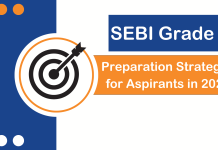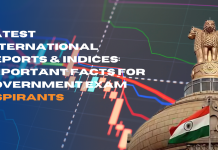The onset of the COVID-19 pandemic has put India in an unprecedented position. It has not only been pressured on the healthcare front, its economic prowess has also been challenged. However, the Central Government has stayed alert in confronting the situation.
As soon as the whole country went to a complete lockdown, the Central Government announced Pradhan Mantri Garib Kalyan Package (PMGKP) worth Rs 1.70 lakh crore on 26th March 2020. It was followed by another mega package of Rs 20 lakh crore (equivalent to 10% of India’s GDP) – the Aatma Nirbhar Bharat Package (ANBP). The primary aim of these two packages was to assist the severely-hit businesses and help the Indian economy to stand on its feet.
The Demand Boosting Package
On the continuation of the reforming measures, the Central Government has recently come up with another stimulus package with a special aim to boost consumer demand and stimulate investment. As there have been numerous job losses and closure of many small businesses, this package is surely a step taken in the right direction.
The reform package has been rolled out with two main objectives- boost Consumer Spending and enhance Capital Expenditure. Here are the details of the schemes that were introduced.
LTC Voucher Scheme
Before diving into the details of this scheme, let’s learn about LTC first. Leave Travel Concession or LTC is given to the employees as a reward, wherein the employees can avail of a few days of leave for travelling, and travel expenses up to certain extent are borne by the employer.
The Central Government allows all its employees to get LTC as the sum of fare expenses and leave encashment of 10 days (pay+DA). As the central government employees are not able to avail of LTC due to the on-going pandemic, it has come up with a scheme that allows the employees to utilize their LTC balances.
The scheme allows the Central Government employees and PSBs/PSUs employees to receive money worth 3 times the fare and 1 time the leave encashment only if they agree to purchase non-essential goods attracting minimum 12% GST. The purchase also needs to be done at a GST-registered vendor.
It is expected that the scheme would infuse a demand of Rs 28,000 crore if the same is followed by the State governments as well.
Special Festival Advance Scheme
Festival Advance was abolished on the recommendations of the 7th Pay Commission. However, looking at the current situation, the Central Government decided to reintroduce the Festival Advance Scheme. As per the scheme, the Central Government’s non-gazetted employees, as well as gazetted employees can ask for a one-time and interest-free advance of Rs. 10,000, to be spent by 31st March 2021.
This advance will be recovered on 10 instalments, and it will be provided to the employees through a pre-loaded RuPay card.
Special Assistance to the States
The COVID-19 pandemic has devastated the job market. There have been millions of job losses over the past few months from both the formal sector and the informal sector. The Central Government now aims at reviving the job market by making a decent capital expenditure. The expenditures that are occurred for the creation of physical or financial assets or depletion in financial liabilities are known as Capital Expenditure.
Under the current stimulus package, the Central Government has issued a special interest-free 50-year loan of Rs 12,000 crore to the States for Capital Expenditure. The loans will be disbursed in two parts. The first part must be spent by 31st March 2021 in order to be able to ask the second part.
Here are the details of the Rs 12,000 crore Loan–
| Rs 200 crore each to 8 North East States | Rs 1600 crore |
| Rs 450 crore each to Uttarakhand and Himachal Pradesh | Rs 900 crore |
| Remaining States, as per 15th Finance Commission devolution | Rs 7500 crore |
| The States that will fulfil at least 3 out of 4 reforms spelled out in Aatma Nirbhar Bharat Package (ANBP) | Rs 2000 crore |
| Total | Rs 12,000 crore |
Enhanced Budget Provisions
The Central Government will get an additional Rs 25,000 crore for Capital Expenditure during the current Financial Year. This amount will be an addition to the last approved budget of Rs 4.13 lakh crore. As per the provisions, the amount can only be spent on roads, defence, water supply, urban development and domestically produced capital equipment.
The Impact Of Rs 73,000 Crore Stimulus
As per the Finance Ministry’s estimation, the whole package will augment an additional demand boost of Rs 1 lakh crore. Since the beginning of the pandemic, the Central Government has come up with many stimulus packages and the Reserve Bank of India (RBI) has also been supporting the economy to recover by adhering to an accommodative stance in its Monetary Policies. Like the Finance Minister said that the Central Government employees didn’t feel any major financial impact of the pandemic, it is now their turn to contribute to reviving the demand cycle in the country.
It is too early to measure the true impact of any package now. When the RBI itself expects the economy to contract by 9.5% during the current financial year, nothing is too much. The much detailed version of the article is explained in the video below-
Hope you enjoyed regarding the article and it is very important for exams like NABARD Grade A and B, RBI Grade B etc where question are often asked from various government schemes. Also to ace your preparation for various bank exam like IBPS PO, RBI Grade B, SEBI Grade A ixamBee has launched exclusive online course. As festive season is also going on, you will get a whooping discount on all online courses. So donot wait and grab the opportunity.

Also Read
Get Free Online Test Series, GK updates in form of Beepedia, BeeBooster, as well as latest updates for Bank PO, Bank Clerk, SSC, RBI, NABARD and Other Government Jobs.
займ на карту сбербанконлайн займ круглосуточнозайм легко














